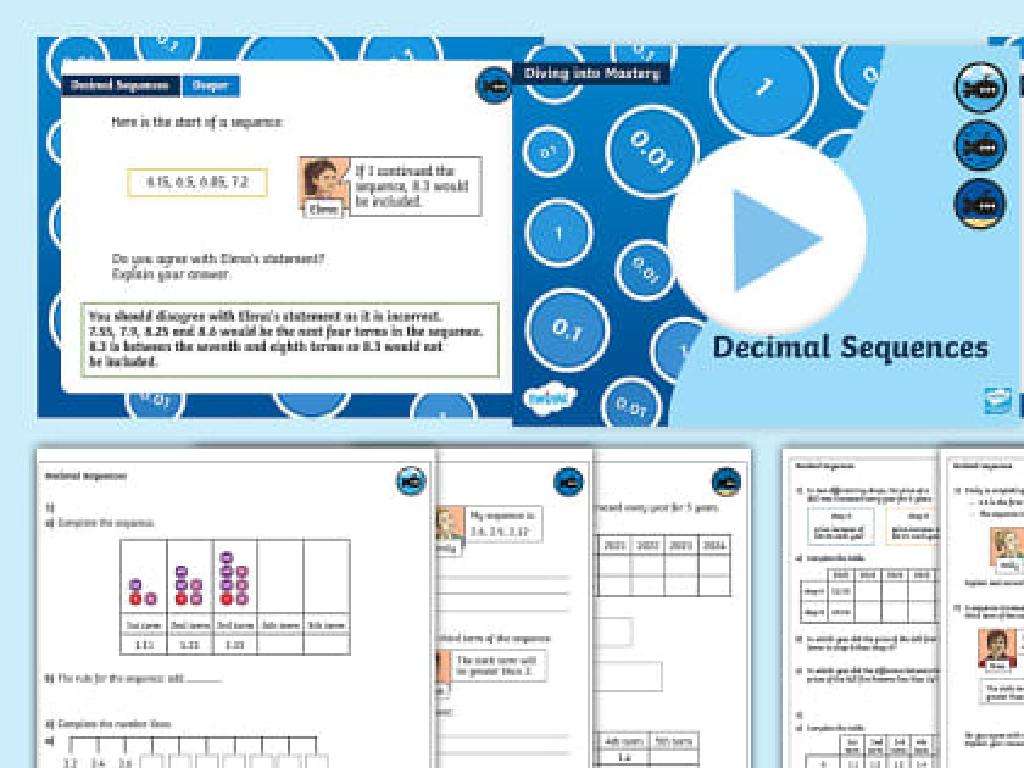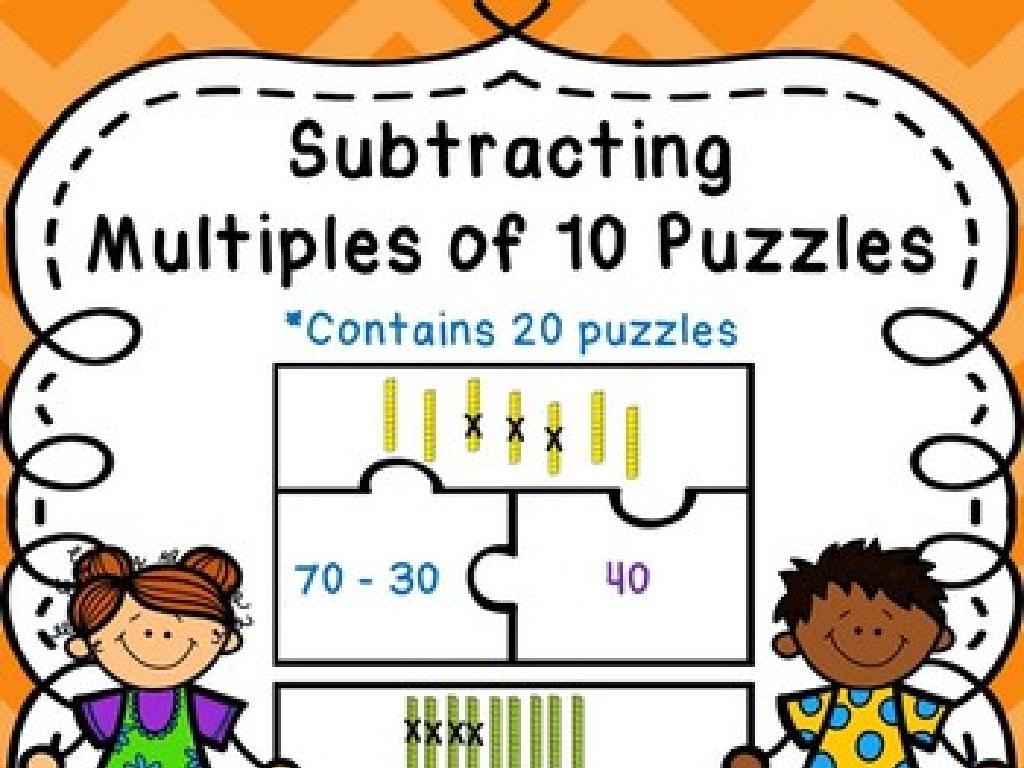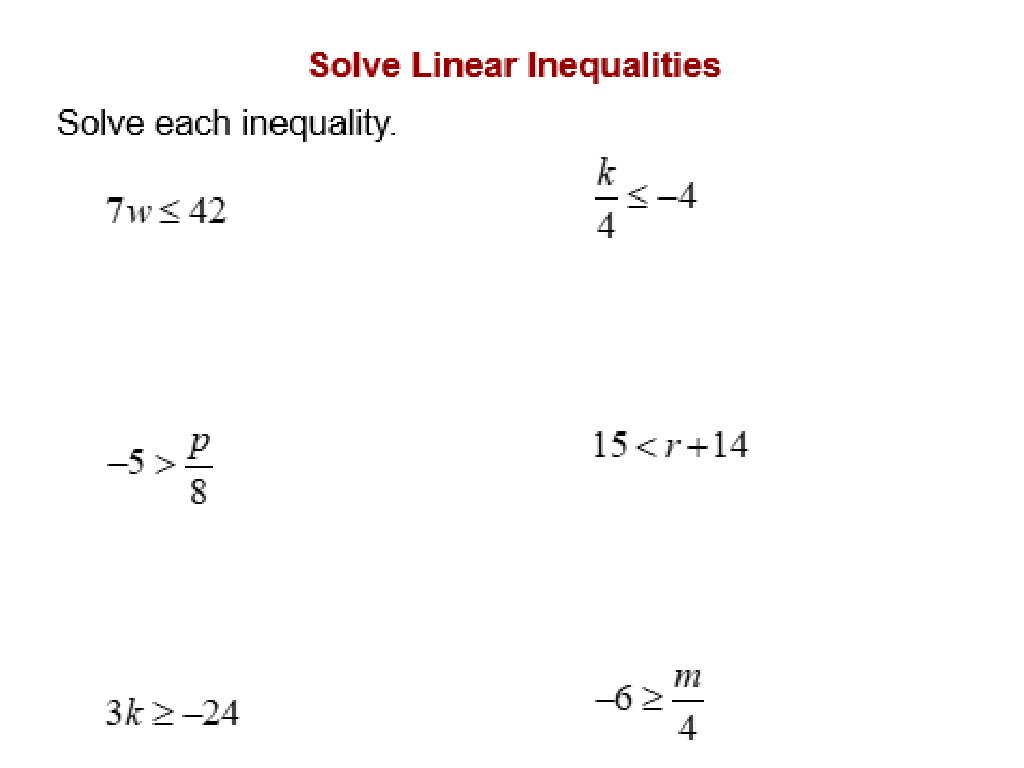Is The Noun Singular Or Plural?
Subject: Language arts
Grade: Third grade
Topic: Nouns
Please LOG IN to download the presentation. Access is available to registered users only.
View More Content
Introduction to Nouns: Singular or Plural?
– What is a noun?
– A noun is a person, place, thing, or idea
– Nouns are all around us
– We see and use nouns every day
– Examples: cat, school, love
– ‘Cat’ is one animal, ‘school’ is one place, ‘love’ is one feeling
– Singular vs. Plural nouns
– Singular means one, plural means more than one
|
Begin the lesson by explaining that a noun is a word that names a person, place, thing, or idea. Emphasize that nouns are fundamental to describing the world around us and can be found everywhere in our daily language. Provide clear examples of nouns that the students can easily relate to, such as ‘cat’ for an animal, ‘school’ for a place, and ‘love’ for a feeling or idea. Introduce the concept of singular and plural nouns, explaining that singular nouns mean just one, while plural nouns indicate more than one. Use visual aids or objects in the classroom to illustrate the difference between singular and plural. Encourage students to think of other nouns and decide if they are singular or plural.
Singular vs. Plural Nouns
– Singular nouns: only one
– Example: one dog, one cat
– Plural nouns: more than one
– Example: two dogs, three cats
– Spotting the difference
– Look for clues in the words
– Rules for making plurals
– Add ‘s’ or ‘es’, change ‘y’ to ‘ies’
|
This slide introduces the concept of singular and plural nouns to third-grade students. Singular nouns refer to a single item, person, or idea, while plural nouns refer to more than one. To help students identify the difference, encourage them to look for quantity clues in sentences and words. For instance, words that end with ‘s’, ‘es’, or change from ‘y’ to ‘ies’ typically indicate a plural noun. Provide examples and have students practice by picking out singular and plural nouns from a sentence or creating both forms from a list of singular nouns. This will help solidify their understanding of how nouns can change in number and the rules that govern these changes.
Making Nouns Plural
– Most nouns get ‘s’ for plural
– Like ‘cat’ becomes ‘cats’
– Add ‘es’ to s, x, z, ch, sh
– Like ‘bus’ becomes ‘buses’
– Some plurals change spelling
– ‘Child’ to ‘children’, ‘mouse’ to ‘mice’
– Practice with different nouns
|
This slide introduces students to the basic rules of forming plural nouns. Start by explaining that in most cases, simply adding an ‘s’ to a noun makes it plural. However, for nouns ending in s, x, z, ch, or sh, the rule changes to adding ‘es’ to make them plural. Highlight that some nouns don’t follow these rules and change spelling entirely when they become plural. Provide examples for each rule and encourage students to come up with their own examples. In the next class, have a practice session where students identify singular and plural nouns and use them in sentences to reinforce their understanding.
Special Plural Rules for Nouns
– Some nouns have unique rules
– Irregular nouns may seem tricky
– Examples: child becomes children
– Not ‘childs’ but ‘children’
– Mouse turns into mice
– Not ‘mouses’ but ‘mice’
|
This slide introduces students to the concept that not all nouns follow the regular pattern when changing from singular to plural form. Emphasize that while many nouns just add an ‘s’ or ‘es’ to become plural, some nouns are irregular and change their form completely. Provide examples like ‘child’ changing to ‘children’ and ‘mouse’ to ‘mice’ to illustrate this point. Encourage students to remember these special cases as they read and write. You can plan activities where students match singular nouns to their irregular plural forms or find them in a story context.
Let’s Practice: Singular or Plural Nouns?
– Identify: singular or plural noun?
– Change singular nouns to plural
– Add ‘s’ or ‘es’, or change the word if needed
– Change plural nouns to singular
– Remove ‘s’ or ‘es’, or revert the word to its original form
– Recall the rules for nouns
– Use the rules we learned to help you decide
|
This slide is for a class activity where students will practice distinguishing between singular and plural nouns. They will also convert nouns from singular to plural and vice versa. Remind the students of the rules for forming plurals, such as adding ‘s’ or ‘es’, or changing the word entirely for irregular nouns. For example, ‘fox’ becomes ‘foxes’, and ‘child’ becomes ‘children’. Encourage the students to think about the context of the noun to determine its number. Provide a list of nouns for the students to work on and ask them to write sentences using both the singular and plural forms. This will help reinforce their understanding of how nouns function within a sentence.
Class Activity: Noun Hunt
– Team up for a Noun Hunt
– Find objects in our classroom
– Is it singular or plural?
– Decide if each noun is one (singular) or more (plural)
– Share with the class
|
This interactive group activity is designed to help students understand the concept of singular and plural nouns through a fun ‘Noun Hunt’ in the classroom. Divide the class into small groups and assign them to find various objects around the classroom. Each group should make a list of the objects they find and determine whether each noun is singular (one object) or plural (more than one object). After the hunt, each group will present their list and explain their reasoning for the classification of each noun. Possible activities: 1) Counting items to determine plurality, 2) Creating sentences using their found nouns, 3) Drawing the objects and labeling them as singular or plural, 4) Using the objects to create a story with a mix of singular and plural nouns, 5) Comparing lists with other groups to see if they found different objects and classified them similarly.
Nouns Review: Singular and Plural
– Congratulations on learning nouns!
– Practice makes perfect
– The more you practice, the better you’ll get!
– Observe nouns in daily life
– Look around and see if nouns are singular or plural
– Keep growing your noun knowledge
|
This slide wraps up the lesson on singular and plural nouns. It’s meant to congratulate the students on their hard work and encourage them to continue practicing. Remind them that mastery comes with practice. Encourage them to be observant of the nouns they encounter in their everyday environment, whether it’s at home, school, or during their outdoor activities. Ask them to notice if the nouns are singular (one) or plural (more than one) and think about the rules that apply. This ongoing observation will help reinforce their understanding of the concept. Finally, motivate them to keep expanding their knowledge of nouns as they read and write.





